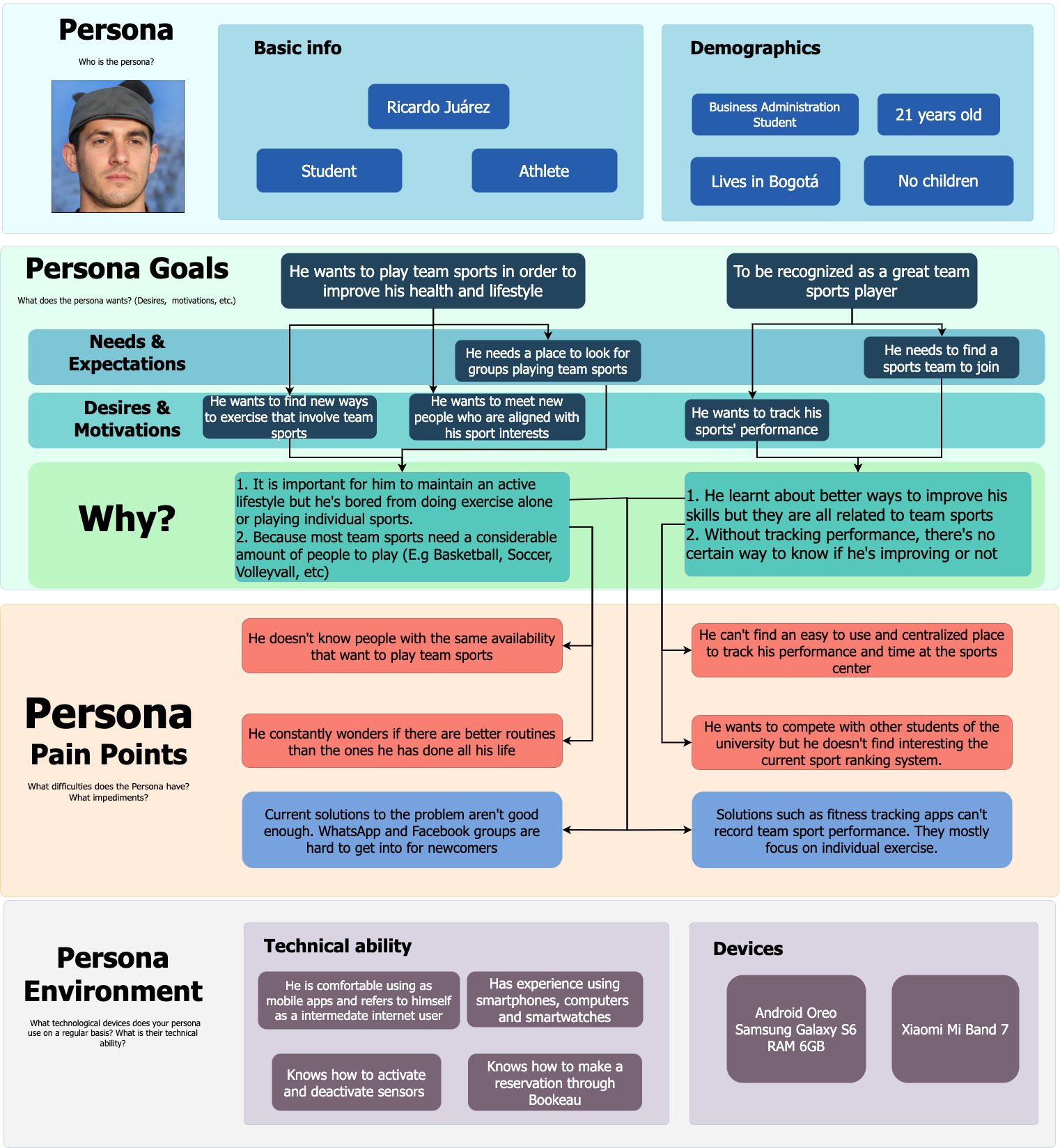-
Notifications
You must be signed in to change notification settings - Fork 1
MS3
The brainstorming process was expanded from the one we did for the MS2 Deliverable. We employed a divergence strategy (yes, and... strategy) where we started posting ideas in the Miro whiteboard while improving on the previous one. Everyone contributed in their own row and discussed which were the most interesting posts after the fact. We ended up with 10 ideas per person with a grand total of 50 ideas that we can extract from.
After the ideas were posted on the whiteboard, we decided to choose the most important ones that we believed would help to solve the problem and the most viable ones, some were discarded since they were not in line with the purpose of the proposed solution. In the same diagram you can see the most influential (high priority) ideas marked with a yellow star.
The native quality diagram can be found through this Miro link
However, you can also find screenshots and the pdf file of the brainstorming below:



From this brainstorm the main ideas gathered from it were:
- A group creation/joining system for posting and finding sport activities
- A filter system to search for sports activities by sport and date/time
- Personalized notifications for users based on their interests and preferences
- The ability to save previous groups for future reference
- The option to record sports interests for a better user experience
- Information on sports equipment and facilities, including machine usage instructions
- Alerts for when a court becomes available
- A system for winning "sport points"
To choose which problem to select we decided to do a mix of Convergence strategies: "Post It Voting" and the "Four Categories" but with a bit of a twist. We put all ideas in a canvas and ranked them from 1 to 4 in different categories. These divisions were:
- Most impactful solution to the problem
- Most liked (favorite) problem to solve
- Most feasible problem to solve
- High risk, high reward solution
In the end, we voted through google forms (you can find the spreadsheet with the results here) and the winner ended up being:
Difficulties finding people to practice a sport
PS: Since the spreadsheet is too wide to fit in a screenshot, you can download an MS Excel version of the spreadsheet from here. (File hosted on the wiki repo)
- Juan Andrés Romero:

- María Camila Gómez:
- Juan Sebastián Alegría:


-
Luis Castro: Empathy Map: Laura Herrera

-
Javier Peniche:

We have created two personas that represent the types of students who might use our product. These personas help us to understand and empathize with our users, and to make design decisions that will meet their needs.
- Ricardo Juárez: He is a avid sportsman playing soccer and tennis in his free time. He is also into healthy living and tracks his fitness goals using a smartwatch and fitness apps. Ricardo is studying business administration and is a full-time student. He has a part-time job and is very active in student organizations and clubs. He values time management and efficiency, as he wants to be able to balance his academic and personal pursuits.

- Valentina Rojas: She is an industrial engineer student that doesn't like to do sports but is passionate about volunteering and making a positive impact in her community. She is also interested in using technology to make a difference and is open to exploring new tools and apps that can help her achieve her goals.

The proposed solution to the problem of is a mobile app that allows users to create or join sports groups similar to the Look for Group/Look for Member services that some videogames offer. Additionally, among the features of the app, users should be able to filter and find available sports activities, access information about sports facilities and equipment, receive personalized notifications based on interests, and participate in tournaments.
One of the main problems we found in the empathy and person maps was that people have difficulty finding someone to do sports with, for this the application allows them to join matches or open sports sessions that are taking place at the moment or at the future with university students, after the first sports session it is possible that they will reschedule another session in the future thus strengthening the union between the users.
On the other hand, one of the motivations is that the users are recognized for their sports skills for this, the app will also include a sports performance tracking system. Through this system, users will be able to record their exercise activity and earn achievements and "Uniandes Sport" points. These points can be redeemed for rewards or discounts. Additionally, the tracking system will offer users personalized insights into their performance, allowing them to identify areas of improvement and set goals.
Here are some of the possible views that we designed for our application:





